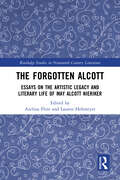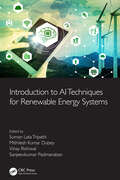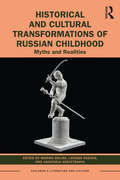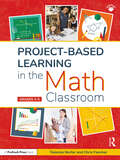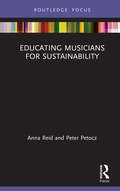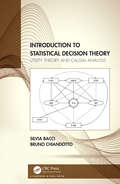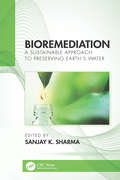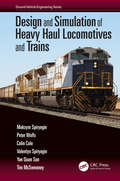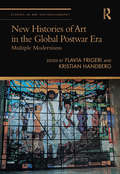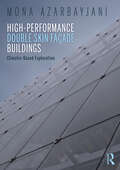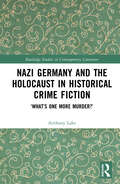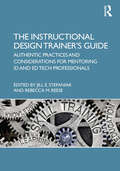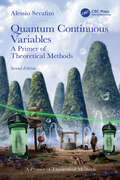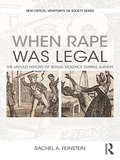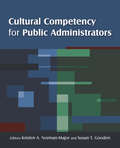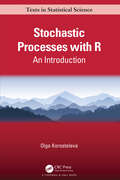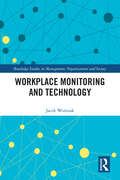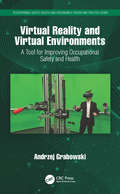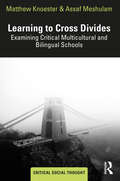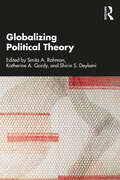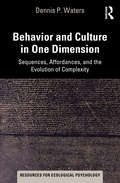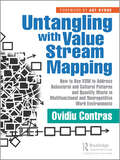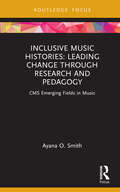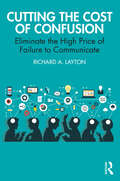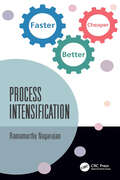- Table View
- List View
The Forgotten Alcott: Essays on the Artistic Legacy and Literary Life of May Alcott Nieriker (Routledge Studies in Nineteenth Century Literature)
by Azelina FlintThis collection is the first academic study of the captivating life and career of expatriate artist, writer, and activist, May Alcott Nieriker. Nieriker is known as the sister of Louisa May Alcott and model for "Amy March" in Alcott’s Little Women. As this book reveals, she was much more than "Amy"—she had a more significant impact on the Concord community than her sister and later became part of the creative expat community in Europe. There, she imbued her painting with the abolitionist activism she was exposed to in childhood and pursued an ideal of artistic genius that opposed her sister’s vision of self-sacrifice. Embarking on a career that took her across London, Paris, and Rome, Nieriker won the acclaim of John Ruskin and forged a network of expatriate female painters who changed the face of nineteenth-century art, creating opportunities for women that lasted well into the twentieth century. A "Renaissance woman," Nieriker was a travel writer, teacher, and curator. She is recovered here as a transdisciplinary subject who stands between disciplines, networks, and ideologies—stiving to recognize the dignity of others. Contributors include foundational Alcott scholar Daniel Shealy and Pulitzer Prize winner John Matteson, as well as Curators, Jan Turnquist (Orchard House) and Amanda Burdan (Brandywine River Museum of Art). In this book, readers will become acquainted with a dynamic feminist thinker who transforms our understanding of the place of women artists in the wider cultural and intellectual life of nineteenth-century Britain, France, and the United States.
Introduction to AI Techniques for Renewable Energy System
by Suman Lata Tripathi Mithilesh Kumar Dubey Vinay Rishiwal Sanjeevikumar PadmanabanIntroduction to AI techniques for Renewable Energy SystemArtificial Intelligence (AI) techniques play an essential role in modeling, analysis, and prediction of the performance and control of renewable energy. The algorithms used to model, control, or predict performances of the energy systems are complicated, involving differential equations, enormous computing power, and time requirements. Instead of complex rules and mathematical routines, AI techniques can learn critical information patterns within a multidimensional information domain. Design, control, and operation of renewable energy systems require a long-term series of meteorological data such as solar radiation, temperature, or wind data. Such long-term measurements are often non-existent for most of the interest locations or, wherever they are available, they suffer from several shortcomings, like inferior quality of data, and in-sufficient long series. The book focuses on AI techniques to overcome these problems. It summarizes commonly used AI methodologies in renewal energy, with a particular emphasis on neural networks, fuzzy logic, and genetic algorithms. It outlines selected AI applications for renewable energy. In particular, it discusses methods using the AI approach for prediction and modeling of solar radiation, seizing, performances, and controls of the solar photovoltaic (PV) systems.Features Focuses on a significant area of concern to develop a foundation for the implementation of renewable energy system with intelligent techniques Showcases how researchers working on renewable energy systems can correlate their work with intelligent and machine learning approaches Highlights international standards for intelligent renewable energy systems design, reliability, and maintenance Provides insights on solar cell, biofuels, wind, and other renewable energy systems design and characterization, including the equipment for smart energy systems This book, which includes real-life examples, is aimed at undergraduate and graduate students and academicians studying AI techniques used in renewal energy systems.
Historical and Cultural Transformations of Russian Childhood: Myths and Realities (Children's Literature and Culture)
by Marina Balina Larissa Rudova Anastasia KostetskayaHistorical and Cultural Transformations of Russian Childhood is a collection of multidisciplinary scholarly essays on childhood experience. The volume offers new critical approaches to Russian and Soviet childhood at the intersection of philosophy, literary criticism, film/visual studies, and history. Pedagogical ideas and practices, and the ideological and political underpinnings of the experience of growing up in pre-revolutionary Russia, the Soviet Union, and Putin’s contemporary Russia are central venues of analysis. Toward the goal of constructing the "multimedial childhood text," the contributors tackle issues of happiness and trauma associated with childhood and foreground its fluidity and instability in the Russian context. The volume further examines practices of reading childhood: as nostalgic text, documentary evidence, and historic mythology. Considering Russian childhood as historical documentation or fictional narrative, as an object of material culture, and as embodied in different media (periodicals, visual culture, and cinema), the volume intends to both problematize but also elucidate the relationship between childhood, history, and various modes of narrativity.
Project-Based Learning in the Math Classroom: Grades 3-5
by Telannia Norfar Chris FancherProject-Based Learning in the Math Classroom: Grades 3–5 explains how to keep inquiry at the heart of mathematics teaching in the upper elementary grades. Helping teachers integrate other subjects into the math classroom, this book outlines in-depth tasks, projects and routines to support Project-Based Learning (PBL). Featuring helpful tips for creating PBL units, alongside models and strategies that can be implemented immediately, Project-Based Learning in the Math Classroom: Grades 3–5 understands that teaching in a project-based environment means using great teaching practices. The authors impart strategies that assist teachers in planning standards-based lessons, encouraging wonder and curiosity, providing a safe environment where mistakes can occur, and giving students opportunities for revision and reflection.
Educating Musicians for Sustainability (ISME Series in Music Education)
by Anna Reid Peter PetoczEducating Musicians for Sustainability explores the intersections of sustainability and music, investigating how sustainability affects the development and professional preparation of musicians while asking the question, ‘What does sustainability have to do with music?’ The volume presents a series of case studies organised according to an expanded view of the ‘four pillars of sustainability’, addressing cultural, environmental, economic, and social concerns. These case studies reveal a multitude of intersections, highlighting the crucial role music can play in raising awareness and overcoming the crisis of sustainability. In examining pedagogical and practical implications, aspiring musicians are encouraged to develop a broader view of the musical profession as a human endeavour, one that is intimately related to the world in which they live. Educating Musicians for Sustainability addresses the most pressing and serious problem of contemporary times – and seeks to inspire changes in attitudes and behaviour, for the benefit of all of humanity.
Introduction to Statistical Decision Theory: Utility Theory and Causal Analysis
by Silvia Bacci Bruno ChiandottoIntroduction to Statistical Decision Theory: Utility Theory and Causal Analysis provides the theoretical background to approach decision theory from a statistical perspective. It covers both traditional approaches, in terms of value theory and expected utility theory, and recent developments, in terms of causal inference. The book is specifically designed to appeal to students and researchers that intend to acquire a knowledge of statistical science based on decision theory.Features Covers approaches for making decisions under certainty, risk, and uncertainty Illustrates expected utility theory and its extensions Describes approaches to elicit the utility function Reviews classical and Bayesian approaches to statistical inference based on decision theory Discusses the role of causal analysis in statistical decision theory
Bioremediation: A Sustainable Approach to Preserving Earth’s Water
by Sanjay K. SharmaBioremediation: A Sustainable Approach to Preserving Earth’s Water discusses the latest research in green chemistry practices and principles that are involved in water remediation and the quality improvement of water.The presence of heavy metals, dyes, fluoride, dissolved solids and many other pollutants are responsible for water pollution and poor water quality. The removal of these pollutants in water resources is necessary, yet challenging. Water preservation is of great importance globally and researchers are making significant progress in ensuring this precious commodity is safe and potable. This volume illustrates how bioremediation in particular is a promising green technique globally.Features: Addresses bioremediation of all the major water pollutants Approaches the chemistry of water and the concept of water as a renewable resource from a green chemistry aspect Discusses environmental chemistry and the practice of industrial ecology Explains the global concern of adequate high quality water supplies, and how bioremediation can resolve this Explores sustainable development through green engineering
Design and Simulation of Heavy Haul Locomotives and Trains (Ground Vehicle Engineering)
by Maksym Spiryagin Peter Wolfs Colin Cole Valentyn Spiryagin Yan Quan Sun Tim McSweeneyWith the increasing demands for safer freight trains operating with higher speed and higher loads, it is necessary to implement methods for controlling longer, heavier trains. This requires a full understanding of the factors that affect their dynamic performance. Simulation techniques allow proposed innovations to be optimised before introducing them into the operational railway environment. Coverage is given to the various types of locomotives used with heavy haul freight trains, along with the various possible configurations of those trains. This book serves as an introductory text for college students, and as a reference for engineers practicing in heavy haul rail network design,
New Histories of Art in the Global Postwar Era: Multiple Modernisms (ISSN)
by Flavia FrigeriThis book maps key moments in the history of postwar art from a global perspective. The reader is introduced to a new globally oriented approach to art, artists, museums and movements of the postwar era (1945–70). Specifically, this book bridges the gap between historical artistic centers, such as Paris and New York, and peripheral loci. Through case studies, previously unknown networks, circulations, divides and controversies are brought to light. From the development of Ethiopian modernism, to the showcase of Brazilian modernity, this book provides readers with a new set of coordinates and a reassessment of well-trodden art historical narratives around modernism. This book will be of interest to scholars in art historiography, art history, exhibition and curatorial studies, modern art and globalization.
High-Performance Double Skin Façade Buildings: Climatic-Based Exploration
by Mona AzarbayjaniThis book provides a comprehensive theoretical platform for the use and construction of double skin façade projects. The DSF concept has been used mostly in European buildings; however, its success in other climates should be addressed. Increasing numbers of buildings are featuring double skin façade technology in the US; however, still relatively few have been studied for their performance in operation.This book gives architects a practical guide to analyze and evaluate the actual performance of double skin façade buildings in different climatic contexts. It is important for high-performance buildings to have tools to evaluate a design’s predicted performance to achieve specific sustainable goals. To determine that the application of DSF in different climates will provide better thermal comfort, building simulation tools analyze various thermal comfort parameters through studies of the façade and compare them with the actual building’s performance data. The book takes the reader on an on-site tour of eight DSF buildings around the US. Interviews with the buildings’ architects and engineers, owners, and users offer additional perspectives and insights into the construction and performance of these developments in building design.This will provide architects with a comprehensive understanding of the challenges and opportunities in integrating double skin façades into their projects.
Nazi Germany and the Holocaust in Historical Crime Fiction: ‘What’s One More Murder?’ (Routledge Studies in Contemporary Literature)
by Anthony LakeThis is the first book- length academic study of the portrayal in contemporary historical crime fiction of Nazi Germany and the Holocaust and their legacies. It discusses novels written by five authors: David Downing, Philip Kerr, Luke McCallin, Joseph Kanon and David Thomas. Their work belongs to a subgenre of the historical crime novel that has emerged since the late 1980s to become a significant body of writing located at the intersection of crime fiction and Holocaust literature. The readings of these novels explore questions of form and genre to ask how popular fiction might approach the Holocaust. Themes of resistance and complicity and the relationship between them, and problems of guilt and responsibility are also discussed. This book also explores questions of justice to show how these novels explore social and moral justice, and vengeance and revenge, as alternatives to ordinary legal justice after the Holocaust.
The Instructional Design Trainer’s Guide: Authentic Practices and Considerations for Mentoring ID and Ed Tech Professionals
by Jill E. Stefaniak Rebecca M. ReeseThe Instructional Design Trainer’s Guide provides foundational concepts and actionable strategies for training and mentoring instructional design and educational technology students to be effective across contexts. ID faculty are charged with bridging the gap between research and practice preparing graduate students for the real-world workforce. This book provides trainers and university programs with authentic learning experiences that better articulate the practices of and demands on design and technology professionals in the field. Through this enhanced perspective, learners will be better positioned to confidently embrace constraints, work among changing project expectations, interact with multiple stakeholders, and convey to employers the skills and competencies gleaned from their formal preparation.
Quantum Continuous Variables: A Primer of Theoretical Methods
by Alessio SerafiniQuantum Continuous Variables introduces the theory of continuous variable quantum systems, from its foundations based on the framework of Gaussian states to modern developments, including its applications to quantum information and forthcoming quantum technologies. This book addresses the theory of Gaussian states, operations, and dynamics in great depth and breadth, through a novel approach that embraces both the Hilbert space and phase descriptions.The second edition of this book has been revised throughout, and updated to include new topics, such as boson sampling, coherent feedback, nonlinear control, as well as several new solved problems.The volume includes coverage of entanglement theory and quantum information protocols, and their connection with relevant experimental set-ups. General techniques for non-Gaussian manipulations also emerge as the treatment unfolds and are demonstrated with specific case studies.This book will be of interest to graduate students looking to familiarise themselves with the field, in addition to experienced researchers eager to enhance their understanding of its theoretical methods. It will also appeal to experimentalists searching for a rigorous but accessible treatment of the theory in the area.Features Provides the first systematic graduate-level textbook for the field of quantum continuous variables and includes 77 problems for the reader, with accompanying solutions Explores applications to entanglement theory, nonlocality, quantum technologies and quantum control Describes, in detail, a comprehensive list of experimental platforms where the formalism applies Alessio Serafini earned his PhD from the University of Salerno. He is currently a Professor at University College London. His research focuses mainly on quantum optics, quantum information with continuous variables, and the theory of quantum control.
When Rape was Legal: The Untold History of Sexual Violence during Slavery (New Critical Viewpoints on Society)
by Rachel A. FeinsteinWhen Rape was Legal is the first book to solely focus on the widespread rape perpetrated against enslaved black women by white men in the United States. The routine practice of sexual violence against enslaved black women by white men, the motivations for this rape, and the legal context that enabled this violence are all explored and scrutinized. Enlightening analysis found that rape was not merely a result of sexual desire and opportunity, or simply a form of punishment and racial domination, but instead encompassed all of these dimensions as part of the identity of white masculinity. This provocative text highlights the significant role that white women played in enabling sexual violence against enslaved black women through a variety of responses and, at times, through their lack of response to the actions of the white men in their lives. Significantly, this book finds that sexual violence against enslaved black women was a widespread form of oppression used to perform white masculinity and reinforce an intersectional hierarchy. Additionally, white women played a vital role by enabling this sexual violence and perpetuating the subordination of themselves and those subordinate to them.
Cultural Competency for Public Administrators
by Kristen A. Norman-Major Susan T GoodenWith a focus on a broad spectrum of topics--race, ethnicity, gender, disability, and sexual orientation at the federal, tribal, state, and local levels--this book equips readers to better understand the complex, real-world challenges public administrators confront in serving an increasingly diverse society.The book's main themes include: What is cultural competency and why is it important? Building culturally competent public agencies; Culturally competent public policy; Building culturally competent public servants; How do agencies assess their cultural competency and what is enough? PA scholars will appreciate the attention given to the role of cultural competency in program accreditation, and to educational approaches to deliver essential instruction on this important topic. Practitioners will value the array of examples that reflect many of the common trade offs public administrators face when trying to deliver comprehensive programs and services within a context of fiscal realities.
Stochastic Processes with R: An Introduction (Chapman & Hall/CRC Texts in Statistical Science)
by Olga KorostelevaStochastic Processes with R: An Introduction cuts through the heavy theory that is present in most courses on random processes and serves as practical guide to simulated trajectories and real-life applications for stochastic processes. The light yet detailed text provides a solid foundation that is an ideal companion for undergraduate statistics students looking to familiarize themselves with stochastic processes before going on to more advanced courses.Key Features Provides complete R codes for all simulations and calculations Substantial scientific or popular applications of each process with occasional statistical analysis Helpful definitions and examples are provided for each process End of chapter exercises cover theoretical applications and practice calculations
Workplace Monitoring and Technology (Routledge Studies in Management, Organizations and Society)
by Jacek WoźniakWorkplace Monitoring and Technology aims to showcase results of research and explanatory theories that influence employees' acceptance of the fact that work is monitored using ICT-based monitoring tools. Work monitoring, understood as obtaining, storing and reporting the results of collected observations, has always been a managerial task. Traditionally it was carried out by supervisors who, while overseeing the work of employees, would draw conclusions from their observations and implement corrective actions. The use of information and communication technologies (ICT) to monitor the working employee and their performance has changed the methods of monitoring, and the popularization of remote work has increased interest in searching for new monitoring systems using the full potential of new ICT solutions. The new developments in ICT have caused smart monitoring systems and new solutions to evolve in electronic work monitoring based on the Internet of Things and Artificial Intelligence, which enables nearly cost-free monitoring. However, scientific knowledge about them is limited, and above all, so is managerial knowledge about the reception of these tools by employees, while their misuse can cause considerable damage. Presenting a broad overview of the current state of different areas of scientific knowledge regarding smart and electronic monitoring systems of work performance, this book will be of relevance for academics within the fields of human resource management and performance management, and for similar groups of researchers in psychology and sociology.
Virtual Reality and Virtual Environments: A Tool for Improving Occupational Safety and Health (Occupational Safety, Health, and Ergonomics)
by Andrzej GrabowskiVirtual reality (VR) techniques are becoming increasingly popular. The use of computer modeling and visualization is no longer uncommon in the area of ergonomics and occupational health and safety. This book explains how studies conducted in a simulated virtual world are making it possible to test new solutions for designed workstations, offering a high degree of ease for introducing modifications and eliminating risk and work-related accidents. Virtual reality techniques offer a wide range of possibilities including increasing the cognitive abilities of the elderly, adapting workstations for people with disabilities and special needs, and remote control of machines using collaborative robots.Detailed discussions include: Testing protective devices, safety systems, and the numerical reconstruction of work accidents Using computer simulation in generic virtual environments On the one hand, it is a self-study book made so by well-crafted and numerous examples. On the other hand, through a detailed analysis of the virtual reality from a point of view of work safety and ergonomics and health improvement. Ewa Grabska, Jagiellonian University, Kraków, PolandNoteworthy is the broad scope and diversity of the addressed problems, ranging from training employees using VR environments with different degrees of perceived reality; training and rehabilitation of the elderly; to designing, testing, modifying, and adapting workplaces to various needs including those of disabled workers; to simulation and investigation of the cause of accidents at a workplace.Andrzej Krawiecki, Warsaw University of Technology, Warsaw, Poland
Learning to Cross Divides: Examining Critical Multicultural and Bilingual Schools (Critical Social Thought)
by Matthew Knoester Assaf MeshulamThis volume demonstrates how multilingual schooling can enhance democracy through a connection with the policies and practices of critical education.With its in-depth analysis of real schools that focus on the dual emphases of multiculturalism and integration, this book offers a comparative look at educational and political controversies over race, citizenship, and societal power relations. The authors describe the ambitious goals and critical multicultural and bilingual education strategies used at these schools, and, in doing so, they highlight how the challenges involved relate to larger theoretical issues that are inherent to a critically multicultural and bilingual education.This book examines what a truly critical multicultural and bilingual education means and what it requires of those who are intimately connected with these processes. As such, it will be important reading for those studying, teaching, or researching in Sociology of Education, Multicultural Education, Multilingual and Bilingual Education, Educational Policy, and Critical Education Studies.
Globalizing Political Theory
by Smita A. Rahman Katherine A. Gordy Shirin S. DeylamiGlobalizing Political Theory is guided by the need to understand political theory as deeply embedded in local networks of power, identity, and structure, and to examine how these networks converge and diverge with the global. With the help of this book, students of political theory no longer need to learn about ideas in a vacuum with little or no attention paid to how such ideas are responses to varying local political problems in different places, times, and contexts.Key features include: Central Conceptual Framework: Introducing readers to what it means to “globalize” political theory and to move beyond the traditional western canon and actively engage with a multiplicity of perspectives. Organization: Focused on key topics essential for an introductory class aimed at both globalizing political theory and showing how political theory itself is a globalizing activity. Themes: Colonialism and Empire; Gender and Sexuality; Religion and Secularism; Marxism, Socialism, and Globalization; Democracy and Protest; and Race, Ethnicity, and Indigeneity. Pedagogy: Each chapter features theoretical concepts and definitions, political and historical context, key authors and biographical context, textual evidence and exegesis from the foundational texts in that thematic area, a list of discussion questions, and a list of resources for further reading. Committed to a multiplicity of perspectives and an active engagement between the global and the local, Globalizing Political Theory connects directly with undergraduate and graduate-level courses in political theory, global political theory, and non-western political thought.
Behavior and Culture in One Dimension: Sequences, Affordances, and the Evolution of Complexity (Resources for Ecological Psychology Series)
by Dennis WatersBehavior and Culture in One Dimension adopts a broad interdisciplinary approach, presenting a unified theory of sequences and their functions and an overview of how they underpin the evolution of complexity.Sequences of DNA guide the functioning of the living world, sequences of speech and writing choreograph the intricacies of human culture, and sequences of code oversee the operation of our literate technological civilization. These linear patterns function under their own rules, which have never been fully explored. It is time for them to get their due. This book explores the one-dimensional sequences that orchestrate the structure and behavior of our three-dimensional habitat. Using Gibsonian concepts of perception, action, and affordances, as well as the works of Howard Pattee, the book examines the role of sequences in the human behavioral and cultural world of speech, writing, and mathematics. The book offers a Darwinian framework for understanding human cultural evolution and locates the two major informational transitions in the origins of life and civilization. It will be of interest to students and researchers in ecological psychology, linguistics, cognitive science, and the social and biological sciences.
Untangling with Value Stream Mapping: How to Use VSM to Address Behavioral and Cultural Patterns and Quantify Waste in Multifunctional and Nonrepetitive Work Environments
by Ovidiu ContrasThe standard belief in books about Lean initiatives and value stream mapping (VSM) is that VSM works well on transactional processes (which are primarily linear processes where handoffs are well defined and the outcome is known) and it is useful for repetitive projects or products. This book counters these statements by clearly demonstrating how a VSM exercise can be successfully performed in complex, multifunctional environments involving nonrepetitive work, such as aircraft new product development, custom engineering, software development and project management. The methodology described in this book is the result of more than ten years of refinement and is based on practice while working with multidisciplinary teams and helping them achieve their goals. This is a novel approach to capturing the information flow in a VSM by recognizing it as the place where most of the issues are generated, especially for the previously mentioned environments and the fact that classical mapping methodologies (including classical VSM) do not capture it well. The VSM methodology that the author developed goes to the essence of a VSM (activities flow, information flow, timeline), uses conventional VSM icons and some custom information flow icons and helps the following: Quantifying waste (VSM literature gap) Making disconnects visible (VSM literature gap) Making behavioral and cultural patterns visible (VSM literature gap) If the steps are followed thoroughly, then lead time reductions ranging from 60% to 88% are achieved, along with increased availability of resources, more output with the same resources, projects delivered on time and, most importantly, colleagues embracing the Lean mindset, which greatly contributes to maintaining the gains.Essentially, this book helps readers perform a VSM in environments where multiple stakeholders interact with each other to deliver a product or a service with unclear aspects, such as what the product/service is, how all involved can contribute to the product or service transformation and how the interactions between them occur. For example, the products/services targeted in this book include test results, analysis results, a custom design, a process, a methodology, an engineering change, integrated enterprise software and engineering drawings.Concurrently, this book helps readers map behavioral patterns, such as micromanagement, and company culture aspects, such as excessive governance and "decisions by committee."
Inclusive Music Histories: CMS Emerging Fields in Music (CMS Emerging Fields in Music)
by Ayana O. SmithInclusive Music Histories: Leading Change through Research and Pedagogy models effective practices for researchers and instructors striving either to reform music history curricula at large or update individual topics within their classes to be more inclusive. Confronting racial and other imbalances of Western music history, the author develops four core principles that enable a shift in thinking to create a truly intersectional music history narrative and provides case studies that can be directly applied in the classroom. The book addresses inclusivity issues in the discipline of musicology by outlining imbalances encoded into the canonic repertory, pedagogy, and historiography of the field. This book offers comprehensive teaching tools that instructors can use at all stages of course design, from syllabus writing and lecture planning to discussion techniques, with assignments for each of the subject matter case studies. Inclusive Music Histories enables instructors to go beyond token representation to a more nuanced music history pedagogy.
Cutting the Cost of Confusion: Eliminate the High Price of Failure to Communicate
by Richard LaytonConfusion is more than just another daily inconvenience, though its impacts are often hidden in metrics such as market share, productivity, and ROI. This book shows how to identify and eliminate the Cost of Confusion in workplaces, marketplaces, and communities.Cutting that cost demands the ability to distill, integrate, and synthesize ever more complex information from a broad range of perspectives and disciplines. Any gaps in understanding can and do negatively impact performance. Based on Richard Layton’s 20 years of experience helping organizations to be heard and understood, this book offers a powerful universal lens to view the costly impacts of confusion, and provides a framework to identify and manage the risk of failure to communicate with a range of stakeholders and audiences – and save millions of dollars in the process. Decision-makers, practitioners, and students in marketing and advertising, organizational development, knowledge management, information technology, project management, and other fields will appreciate this unique set of insights and tools they can employ to great effect within their companies, organizations, and public institutions.
Process Intensification: Faster, Better, Cheaper
by Ramamurthy NagarajanProcess Intensification: Faster, Better, Cheaper presents basic concepts and applications of process intensification (PI) and links their common effects across processes. It defines two fundamental parameters, PI factor, and Cost Impact (CI) factor, and uses these to analyze various applications where Process Intensification has been carried out.Process Intensification principles have, in the past, been applied to diverse fields, ranging from biodiesel production to offshore processing, and this book unifies these aspects to identify the common factors that drive process enhancements. Each chapter investigates a specific application, discusses the key PI principles, and includes problem sets and examples. The book also provides case studies and realworld examples throughout the chapters.Features: Explores Cost Impact of Process Intensification, and their relative magnitudes, as a universal metric Covers a range of industrial applications, including heat and mass transfer, atomization and comminution, and enhanced oil recovery Discusses the application of Process Intensification for clean coal technology and environmental remediation Includes end-of-chapter problems, examples, and case studies The book is intended for senior undergraduate chemical and mechanical engineering students taking courses in Process Design, Process Optimization, Process Synthesis, and Process Intensification.Instructors will be able to utilize a Solutions Manual and Lecture Slides for their course.The eBook+ version includes the following enhancements: Open-ended essay questions to encourage conceptual thinking and apply new information Pop-up explanations of selected concepts and terms throughout the chapters Interactive definition flashcards that summarize key takeaways at the end of the chapter Quizzes within chapters to help readers refresh their knowledge
